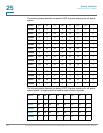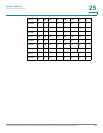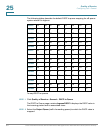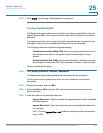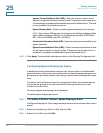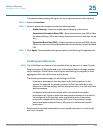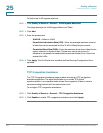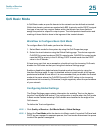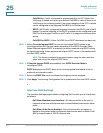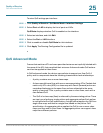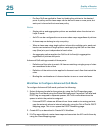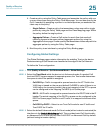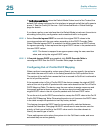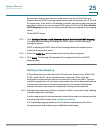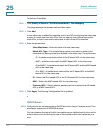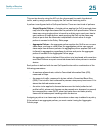
Quality of Service
QoS Basic Mode
507 Cisco Small Business 200, 300 and 500 Series Managed Switch Administration Guide (Internal Version)
25
• CoS/802.1p—Traffic is mapped to queues based on the VPT field in the
VLAN tag, or based on the per-port default CoS/802.1p value (if there is no
VLAN tag on the incoming packet), the actual mapping of the VPT to queue
can be configured in the mapping CoS/802.1p to Queue page.
• DSCP—All IP traffic is mapped to queues based on the DSCP field in the IP
header. The actual mapping of the DSCP to queue can be configured in the
DSCP to Queue page. If traffic is not IP traffic, it is mapped to the best effort
queue.
• CoS/802.1p-DSCP—Either CoS/802.1p or DSCP whichever has been set.
STEP 3 Select Override Ingress DSCP to override the original DSCP values in the
incoming packets with the new values according to the DSCP Override Table.
When Override Ingress DSCP is enabled, the device uses the new DSCP values
for egress queueing. It also replaces the original DSCP values in the packets with
the new DSCP values.
NOTE The frame is mapped to an egress queue using the new, rewritten
value, and not by the original DSCP value.
STEP 4 If Override Ingress DSCP was enabled, click DSCP Override Table to
reconfigure DSCP.
DSCP In displays the DSCP value of the incoming packet that needs to be re-
marked to an alternative value.
STEP 5 Select the DSCP Out value to indicate the outgoing value is mapped.
STEP 6 Click Apply. The Running Configuration file is updated with the new DSCP values.
Interface QoS Settings
The Interface Settings page enables configuring QoS on each port of the device,
as follows:
QoS State Disabled on an Interface—All inbound traffic on the port is
mapped to the best effort queue and no classification/prioritization takes
place.
QoS State of the Port is Enabled—Port prioritize traffic on ingress is
based on the system wide configured trusted mode, which is either CoS/
802.1p trusted mode or DSCP trusted mode.



